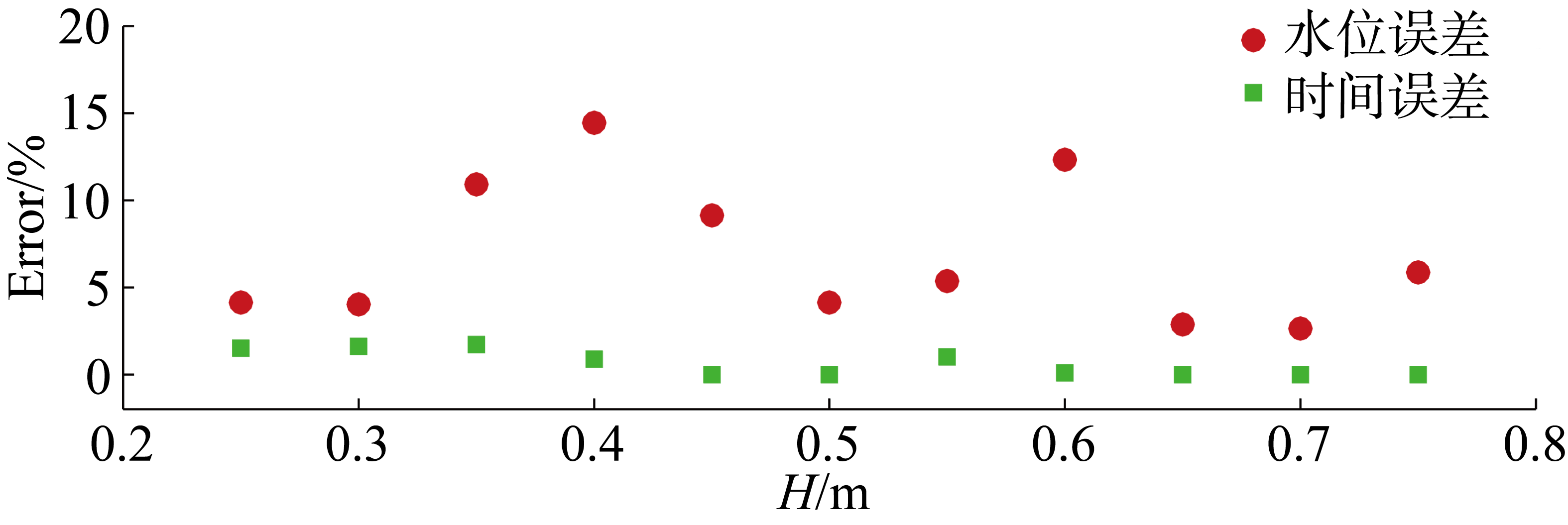| [1] |
包澄澜, 2005. 海啸灾害及其预警系统[J]. 国际地震动态, (1): 14-18.
|
|
BAO CHENGLAN, 2005. Tsunami disaster and its pre-warning system[J]. Recent Developments in World Seismology, (1): 14-18 (in Chinese with English abstract).
|
| [2] |
董杰, 田士政, 武文, 等, 2019. 全球海啸预警系统发展及其对我国的启示[J]. 海洋通报, 38(4): 368-378.
|
|
DONG JIE, TIAN SHIZHENG, WU WEN, et al, 2019. The development of global tsunami warning systems and their enlightenments to China[J]. Marine Science Bulletin, 38(4): 368-378 (in Chinese with English abstract).
|
| [3] |
李庆功, 周忠菲, 苏浩, 等, 2014. 中国南海安全的战略思考[J]. 科学决策, (11): 1-51.
|
|
LI QINGGONG, ZHOU ZHONGFEI, SU HAO, et al, 2014. Strategic thinking on China's south sea security[J]. Scientific Decision Making, (11): 1-51 (in Chinese with English abstract).
|
| [4] |
刘桦, 赵曦, 王本龙, 等, 2015. 海啸数值模拟与南海海啸预警方法[J]. 力学季刊, 36(3): 351-369.
|
|
LIU HUA, ZHAO XI, WANG BENLONG, et al, 2015. Numerical simulation of tsunami and tsunami warning methods for South China Sea region[J]. Chinese Quarterly of Mechanics, 36(3): 351-369 (in Chinese with English abstract).
|
| [5] |
刘铁威, 屈科, 黄竞萱, 等, 2021. 孤立波在透水岸礁上水动力特性数值模拟研究[J]. 水动力学研究与进展(A辑), 36(2): 180-191.
|
|
LIU TEIWEI, QU KE, HUANG JINGXUAN, et al, 2021. Numerical investigation of hydrodynamic characteristics of solitary wave over permeable fringing reef[J]. Chinese Journal of Hydrodynamics, 36(2): 180-191 (in Chinese with English abstract).
|
| [6] |
陆继翔, 张琪培, 杨志宏, 等, 2019. 基于CNN-LSTM混合神经网络模型的短期负荷预测方法[J]. 电力系统自动化, 43(8): 131-137.
|
|
LU JIXIANG, ZHANG QIPEI, YANG ZHIHONG, et al, 2019. Short-term load forecasting method based on CNN-LSTM hybrid neural network model[J]. Automation of Electric Power Systems, 43(8): 131-137 (in Chinese with English abstract).
|
| [7] |
翁少佳, 蔡锦海, 庞运禧, 等, 2024. 卷积神经网络在近岸表层海温预报中的应用[J]. 热带海洋学报, 43(1): 40-47.
|
|
WENG SHAOJIAO, CAI JINHAI, PANG YUNXI, et al, 2024. Application of convolutional neural network to sea surface temperature prediction in the coastal waters[J]. Journal of Tropical Oceanography, 43(1): 40-47 (in Chinese with English abstract).
|
| [8] |
徐志国, 史健宇, 李宏伟, 等, 2022. 南中国海区域海啸预警中心地震监测系统[J]. 地震科学进展, 52(10): 473-481.
|
|
XUE ZHIGUO, SHI JIANYU, LI HONGWEI, et al, 2022. The earthquake monitoring system in the South China Sea Tsunami Advisory Center[J]. Progress in earthquake sciences, 52(10): 473-481 (in Chinese with English abstract).
|
| [9] |
姚宇, 2019. 珊瑚礁海岸水动力学问题研究综述[J]. 水科学进展, 30(1): 139-152.
|
|
YAO YU, 2019. A review of the coral reef hydrodynamics[J]. Advances in Water Science, 30(1): 139-152 (in Chinese with English abstract).
|
| [10] |
GRAVES A, 2012. Long short-term memory[M]// GRAVESA, Supervised sequence labelling with recurrent neural networks. Berlin: Springer: 37-45.
|
| [11] |
HAN ZHONGYANG, ZHAO JUN, LEUNG H, et al, 2021. A review of deep learning models for time series prediction[J]. IEEE Sensors Journal, 21(6): 7833-7848.
|
| [12] |
KINGMA D P, BA J, 2014. Adam: a method for stochastic optimization[C/OL]. ICLR, 3rd International Conference on Learning Representations [2023-09-05]. San Diego: ICLR. https://doi.org/10.48550/arXiv.1412.6980.
|
| [13] |
KIRANYAZ S, INCE T, HAMILA R, et al, 2015. Convolutional neural networks for patient-specific ECG classification[C]// 2015 37th annual international conference of the IEEE engineering in medicine and biology society (EMBC). Milan: IEEE: 2608-2611.
|
| [14] |
KRIZHEVSKY A, SUTSKEVER I, HINTON G E, 2012. ImageNet classification with deep convolutional neural networks[J]. Communications of the ACM, 60(6): 84-90.
|
| [15] |
MAAS A L, HANNUN A Y, NG A Y, 2013. Rectifier nonlinearities improve neural network acoustic models[C]// Proceedings of the 30th international conference on machine learning. Atlanta: JMLR.
|
| [16] |
MAKINOSHIMA F, OISHI Y, YAMAZAKI T, et al, 2021. Early forecasting of tsunami inundation from tsunami and geodetic observation data with convolutional neural networks[J]. Nature Communications, 12(1): 2253.
doi: 10.1038/s41467-021-22348-0
pmid: 33859177
|
| [17] |
MOCHIZUKI M, UEHIRA K, KANAZAWA T, et al, 2018. S-net project: performance of a large-scale seafloor observation network for preventing and reducing seismic and tsunami disasters[C]// IEEE, 2018 OCEANS-MTS/IEEE Kobe Techno-Oceans (OTO). Kobe: IEEE, 1-4.
|
| [18] |
OISHI Y, IMAMURA F, SUGAWARA D, 2015. Near‐field tsunami inundation forecast using the parallel TUNAMI‐N2 model: Application to the 2011 Tohoku‐Oki earthquake combined with source inversions[J]. Geophysical Research Letters, 42(4): 1083-1091.
|
| [19] |
QU KE, REN XINGYUE, KRAATZ S, 2017a. Numerical investigation of tsunami-like wave hydrodynamic characteristics and its comparison with solitary wave[J]. Applied Ocean Research, 63: 36-48.
|
| [20] |
QU KE, REN XINGYUE, KRAATZ S, et al, 2017b. Numerical analysis of tsunami-like wave impact on horizontal cylinders[J]. Ocean Engineering, 145: 316-333.
|
| [21] |
ROEBER V, CHEUNG K F, 2012. Boussinesq-type model for energetic breaking waves in fringing reef environments[J]. Coastal Engineering, 70: 1-20.
|
| [22] |
SRIVASTAVA N, HINTON G, KRIZHEVSKY A, et al, 2014. Dropout: a simple way to prevent neural networks from overfitting[J]. The Journal of Machine Learning Research, 15(1): 1929-1958.
|
 ), QU Ke1,2,3(
), QU Ke1,2,3( ), REN Xingyue4, WANG Xu1,2
), REN Xingyue4, WANG Xu1,2















